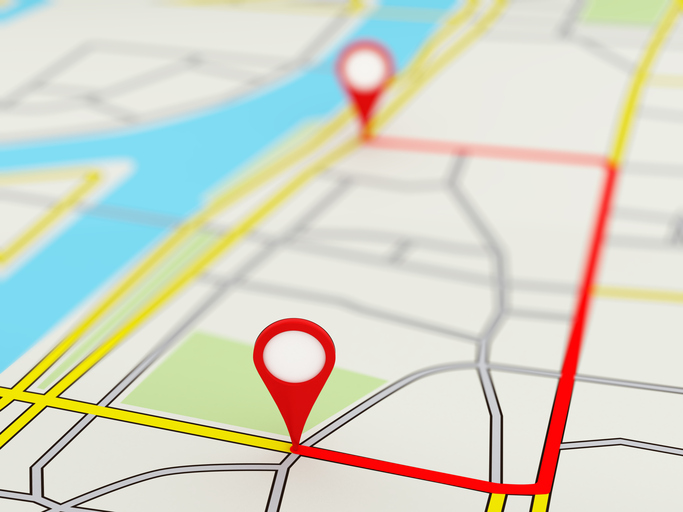Leveraging Geotargeting Effectively for Business
Search
Oct 23
Where targets live, work, shop, and are willing to travel to obtain a particular product or service all play an important part in how advertisers market to them. That’s why advertisers need to harness the benefits of geotargeting to create customized, well-targeted campaigns. Geotargeting has the potential to almost double the performance of digital marketing, whether that’s via paid search or emails.
If more control over who sees your advertisements is important, geotargeting is a must-have marketing tool. Consider these best practices for successful, targeted campaigns.
Reap Location-Based Content Rewards
There are numerous advantages to implementing geotargeting to connect with customers and encourage conversations and conversions. Equipped with data like a user’s IP address, advertisers can personalize content and campaigns for specific geographic regions, tweak deliveries, and track offline sales in a certain location. What better way to segment ads than to appeal to diverse markets simultaneously?
While geotargeting helps to deliver offers or content tailored to a user’s location, it even increases email campaign efficiency. This is particularly useful when advertisers want to drive in more retail foot traffic, credit online sales to email marketing, and direct customers to dynamic landing pages specially designed for target locations.
Geotargeting also produces a way to reduce operating costs. If you’ve ever managed paid search or display ads, you know how crucial it is to cap the scope of an audience. This is easily achieved with geotargeting to limit irrelevant views and clicks and avoid excess budget expenditures.
Exclude Areas Where Targets Won’t Be
Excluding locations are just as important as defining them. Whether narrowing the geographic playing field by venue, one side of a street, or by local events, an area that’s not specifically being targeted can be excluded, too.
For example, nightclubs or sports bars looking to target college students may exclude an area during school breaks or summer months when students aren’t likely to be in the area.
Further, exclusion is an advertiser’s friend when a cost-effective method is key to avoiding costly ad rates in high-demand target areas. Some agencies have found low-priced, larger area ad campaigns achieve the same targeting goals when opting out of all areas except the desired target location.
Use Location-Specific Keywords for Paid Search
Consumers often narrow searches down to a specific name, city, or district. “Nail bars near Rodeo Drive,” “Miami coffee shops,” or “midtown eateries” are search terms consumers are likely to use, and provides just the location criteria advertisers can target. Tourist havens, famous street names, zip codes, and popular venues are just a few location terms to use when you want consumers to find you.
Analyze Target Behavior Based on Previously Visited Locations
Examining a target’s location history provides a wealth of information including shopping habits, online frequency, and modes of transportation to bricks-and-mortar stores. The data provide greater opportunities to deliver relevant location-specific ads, whether the target is in an area of interest or not.
Set a Perimeter by Radius or Time Near Areas of Interest
You can set a perimeter, or geofence, to target certain streets or neighborhoods to deliver detailed, proximity-based campaigns and notifications. Unlike geotargeting, which determines location based on user’s IP address, geofencing uses GPS to get a read on specific locations.
For example, a coffee shop can set a three-mile perimeter around neighboring apartment complexes to reach users looking to grab a cup of joe before heading to work. A perimeter can also be defined by time. Advertisers can take advantage of platforms offering mapping applications that allow mobile apps and sites to search by time instead of distance.
Since geofencing uses different technologies, there are some limitations. Its GPS-based infrastructure creates the need for user authorization. So, if a device’s location services feature is disabled, geo-targeted ads won’t reach the device. However, most users are willing to share their location if they receive something of value in exchange.
Gather Location Data for Facebook Targeting
Capture data on where consumers are willing to travel, not just where they live, and use it for:
● Anyone located in a selected location
● Anyone who lives in a selected location
● Anyone who was recently in a selected location
● Anyone who’s traveling to a selected location
Facebook is the ideal platform to accomplish this. Get your ads in front of the right audience or set up location ad targeting for specific addresses. You can even refine an audience to targets who live in, have recently visited, or are traveling in a particular area.
Geolocation is a powerful tool to help advertisers add context to campaigns. Leveraging the benefits of geotargeting along with careful use of customer information and integrating social media brings advertisers an increase in customer interaction, conversions, and successful campaigns.






